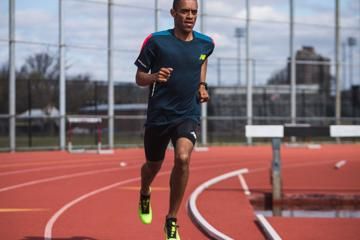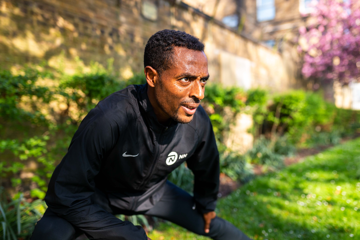Selemon Barega competes at the Brussels Diamond League 2018 (© AFP / Getty Images)
All my life, I’ve been running. Where I come from, a rural farm in southern Ethiopia, that’s just the way of life.
Need to get water for your family? You run. Buy some things at the local market? Run. Get to school, no matter how far away it is? Grab your books and run.
I come from a family of eight and we all ran throughout our childhood, even if I was the first to be a competitor. My school was about 50-60 minutes from my home, depending on how fast I moved. Twice a day I’d walk or run that, ever since the age of seven, but back then it was never about training.
Growing up, I didn’t want to be an athlete, but a football player. Even today, I’m obsessed with that sport. In my training group outside Addis Ababa we’re split down the middle between Manchester United and Arsenal. Me? I support Manchester United, which isn’t much fun at the moment.
As it turned out, I never had the talent to make it in football, but a few years after taking up athletics I had a new dream. I started running competitively in 2013, and can remember finishing second in my first race. My big breakthrough wasn’t until 2016, though.
I won the world U20 5000m title that summer in Poland, which changed everything. After that I signed with Nike and started training with really good athletes: Muktar Edris and Yomif Kejelcha. I knew at that point: if I can run well, I would have a good life.
People often ask about the success of Ethiopians and Kenyans, but it’s simple: we work very hard. I run about 120-130km a week in training, and have recently started gym work to build more strength.
As a kid, my gym programme was simple: carry things around on our farm, where we grew all kinds of cereals. Before me there were never any athletes in my family, but one of my younger brothers is now following my lead, and hopefully he’ll be just as fast.
Looking back, 2018 was a great year, but not perfect. I ran well at the start, finishing second at the World Indoor Championships over 3000m, but things fell apart at the World U20 Championships in Finland.
The weather was too hot the day of the 5000m final and I never felt right during the race. Even with that, I was disappointed not to get any medal – finishing fourth.
But championships are very different to races on the circuit, especially when you run for a country like Ethiopia. Ever since the days of Haile Gebrselassie and Kenenisa Bekele, they expect gold medals, so when you pull on that vest you know everything else will be a failure.
You feel the responsibility to your country, your people, and that’s hard when the races without pacemakers are so unpredictable.
When I’m racing on the Diamond League circuit, I feel free. Yomif and I had a great race over 5000m in Lausanne in July but we clashed on the final bend, which messed things up for both of us.
But we got over all that very quickly. We’re still friends.
My best race of 2018 was definitely in Brussels, but again, it still wasn’t perfect. I won the 5000m in 12:43.02, but when I look back on the race I know I could have run faster. I lost at least one or two seconds waiting for athletes behind instead of pushing the pace with a few laps to run, and I should have run closer to 12:40.
But that can wait for 2019, when, if I get a good race with the right weather, I want to break the world record.
Growing up, Kenenisa Bekele was a hero, along with Haile Gebrselassie. When I became an athlete I was always looking at their achievements and they were my role models.
Now I want to run faster than them. The 10,000m world record, at 26:17.53, is out of my reach at this point, but I think I can get close to the 5000m record, which is 12:37.35.
After the track season I rested for one month, then did some training on my own before re-joining my group. I’m coached by Hussein Shibo and Tolera Dinka and I usually train in Sululta, alongside the world 5000m champion Muktar Edris.
The last few months haven’t been smooth – I had an injury soon after starting back with the group because the training intensity was much higher this year, but I’m over that now, feeling good and ready for 2019.
When I look ahead, I get excited about all the things I want to achieve. My plan is to run on the track until the Tokyo Olympics in 2020, then move to the roads.
And once my racing career is over, I want to work in commerce – to do something with my money that will make things better for my country.
Now that I’ve had some success, I’ve been able to help my family out a bit at home. I still go back to visit them on the farm but these days I’m lucky – I get to oversee everything and don’t have to carry stuff around or run to fetch water.
All my energies are going into becoming as fast as I possibly can on the track.
The fastest ever? I hope so.








